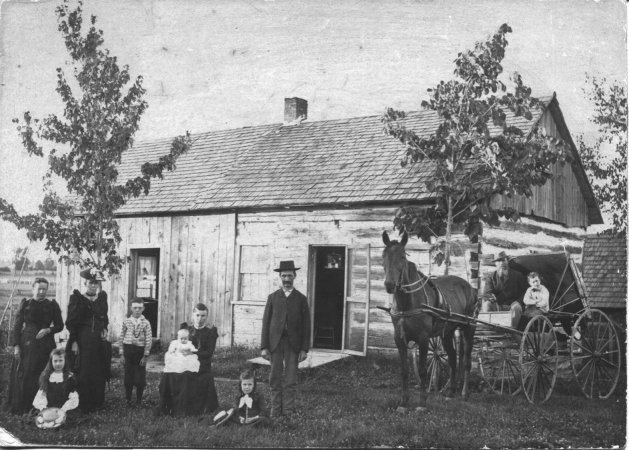Country Canada Population 242,125 (2006) Area 381.30 km2 | Region Mayor Maxime Pedneaud-Jobin | |
Points of interest Gatineau Park, Canadian Museum of History, Jacques Cartier Park, Leamy Lake, Lac Beauchamp Park Colleges and Universities Universite du Quebec en Outaouais, Cegep de lOutaouais, Heritage College, Le Petit Seminaire de Quebec - campus de lOutaouais | ||
Gatineau ( ), officially Ville de Gatineau, is a city in western Quebec, Canada. It is the fourth largest city in the province. Located on the northern banks of the Ottawa River, immediately across from Ottawa, together they form Canadas National Capital Region. As of 2011 Gatineau had a population of 265,349, and a metropolitan population of 314,501. The Ottawa–Gatineau census metropolitan area had a population of 1,236,324.
Contents
- Map of Gatineau
- The wild 1st place showcase hit the floor gatineau htf2015
- 1st place gossip htf gatineau htf2014
- History
- Economy
- References
Map of Gatineau
Gatineau is coextensive with a territory equivalent to a regional county municipality (TE) and census division (CD) of the same name, whose geographical code is 81. It is the seat of the judicial district of Hull.
The wild 1st place showcase hit the floor gatineau htf2015
1st place gossip htf gatineau htf2014
History

The current city of Gatineau is centred on an area called Hull, the oldest non-native settlement in the National Capital Region. It was founded on the north shore of the Ottawa River in 1800 by Philemon Wright at the portage around the Chaudiere Falls just upstream (or west) from where the Gatineau and Rideau Rivers flow into the Ottawa. Wright brought his family, five other families and twenty-five labourers and a plan to establish an agriculturally based community to what was then a mosquito-infested wilderness. But soon after, Wright and his family took advantage of the large lumber stands and became involved in the timber trade. The original settlement was called Wrightstown, later it became Hull and in 2002, after amalgamation, the City of Gatineau.

In 1820, before immigrants from Great Britain arrived in great numbers, Hull Township had a population of 707, including 365 men, 113 women, and 229 children. Note the discrepancy in the number of men and women, owing to the male work of the timber trade. In 1824, there were 106 families and 803 persons. During the rest of the 1820s, the population of Hull doubled, owing to the arrival of Ulster Protestants. By 1851, the population of the County of Ottawa was 11,104, of which 2,811 lived in Hull Township. By comparison, Bytown had a population of 7,760 in 1851. By 1861, Ottawa County now had a population of 15,671, of which 3,711 lived in Hull Township. The gradual move to the Township by French Canadians continued over the years, with the French Canadians growing from 10% of the population in 1850, to 50% in 1870, and 90% in 1920.
The Gatineau River, like the Ottawa River, was very much the preserve of the draveurs, people who would use the river to transport logs from lumber camps until they arrived downriver. (The Gatineau River flows south into the Ottawa River which flows east to the St Lawrence River near Montreal.) The log-filled Ottawa River, as viewed from Hull, appeared on the back of the Canadian one-dollar bill until it was replaced by a dollar coin (the "loonie") in 1987, and the very last of the dwindling activity of the draveurs on these rivers ended a few years later.
Ottawa was founded later, as the terminus of the Rideau Canal built under the command of Col. John By as part of fortifications and defences constructed after the War of 1812. Originally named Bytown, Ottawa did not become the Canadian capital until the mid-19th century after the original parliament in Montreal was torched by a rioting mob of English-speaking citizens on 25 April 1849. Its greater distance from the American border also left the new parliament less vulnerable to foreign attack.
Nothing remains of the original 1800 settlement; the downtown Vieux-Hull sector was destroyed by a terrible fire in 1900 which also destroyed the original pont des Chaudieres (Chaudiere Bridge), a road bridge which has since been rebuilt to join Ottawa to Hull at Victoria Island.
In the 1940s, during World War II, Hull, along with various other regions within Canada, such as the Saguenay–Lac-Saint-Jean, and Ile Sainte-Helene, had Prisoner-of-war camps. Hulls prison was simply labeled with a number and remained unnamed just like Canadas other war prisons. The prisoners of war (POWs) were sorted and classified into categories by nationality and civilian or military status. In this camp, POWs were mostly Italian and German nationals. During the Conscription Crisis of 1944 the prison eventually included Canadians who had refused conscription. Also, prisoners were forced into hard labour which included farming and lumbering the land.
During the 1970s and early 1980s, the decaying old downtown core of Hull was transformed by demolition and replacement with a series of large office complexes. Some 4,000 residents were displaced, and many businesses uprooted along what was once the towns main commercial area.
On 11 November 1992, Mrs. Ghislaine Chenier, Mayoress by interim for the city of Hull, unveiled War Never Again, a marble stele monument which commemorates the suffering caused by war to the men, women and children of the city of Hull.
Economy
A number of federal and provincial government offices are located in Gatineau, due to its proximity to the national capital, and its status as the main town of the Outaouais region of Quebec.
